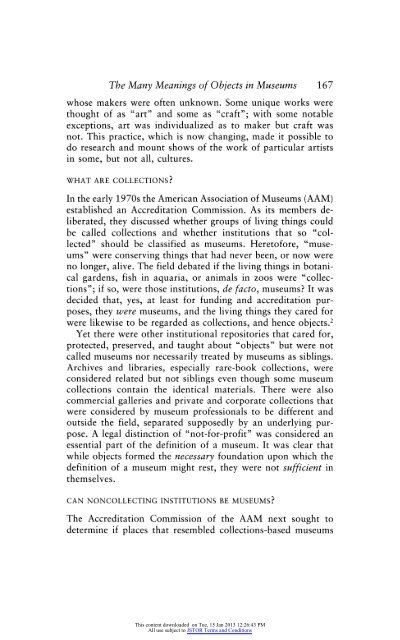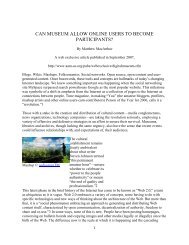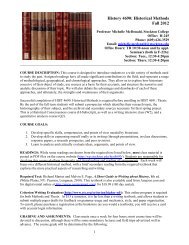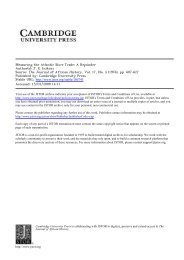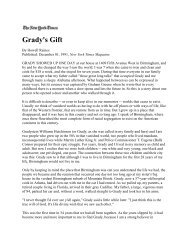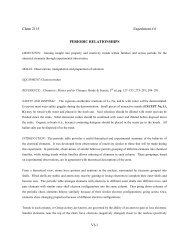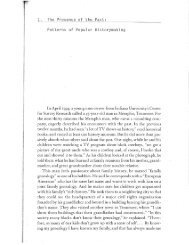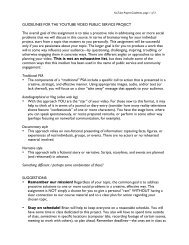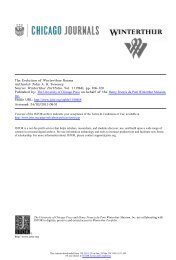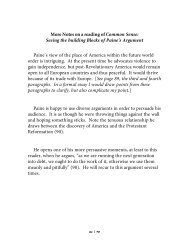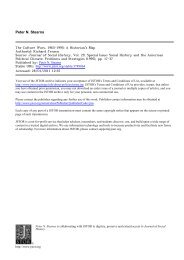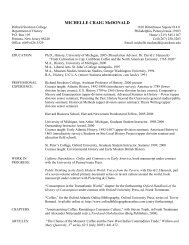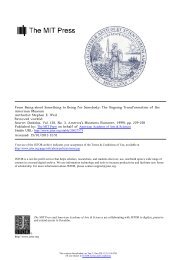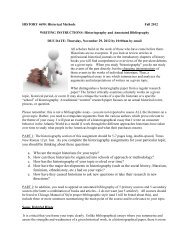What Is the Object of This Exercise? A Meandering Exploration of ...
What Is the Object of This Exercise? A Meandering Exploration of ...
What Is the Object of This Exercise? A Meandering Exploration of ...
Create successful ePaper yourself
Turn your PDF publications into a flip-book with our unique Google optimized e-Paper software.
The Many Meanings <strong>of</strong> <strong>Object</strong>s in Museums 167<br />
whose makers were <strong>of</strong>ten unknown. Some unique works were<br />
thought <strong>of</strong> as "art" and some as<br />
"craft"; with some notable<br />
exceptions,<br />
art was individualized as to maker but craft was<br />
not. <strong>This</strong> practice, which is now<br />
changing, made it possible<br />
to<br />
do research and mount shows <strong>of</strong> <strong>the</strong> work <strong>of</strong> particular artists<br />
in some, but not all, cultures.<br />
WHAT ARE COLLECTIONS?<br />
In <strong>the</strong> early 1970s <strong>the</strong> American Association <strong>of</strong> Museums (AAM)<br />
established an Accreditation Commission. As its members de<br />
liberated, <strong>the</strong>y discussed whe<strong>the</strong>r groups <strong>of</strong> living things could<br />
be called collections and whe<strong>the</strong>r institutions that so "col<br />
lected" should be classified as museums.<br />
Heret<strong>of</strong>ore, "muse<br />
ums" were<br />
conserving things that had never<br />
been,<br />
or now were<br />
no longer, alive. The field debated if <strong>the</strong> living things in botani<br />
cal gardens, fish in aquaria,<br />
or animals in zoos were "collec<br />
tions"; if so, were those institutions, de facto, museums? It was<br />
decided that, yes, at least for funding and accreditation pur<br />
poses, <strong>the</strong>y were museums, and <strong>the</strong> living things <strong>the</strong>y cared for<br />
were likewise to be regarded<br />
as<br />
collections, and hence objects.2<br />
Yet <strong>the</strong>re were o<strong>the</strong>r institutional repositories that cared for,<br />
protected, preserved, and taught about "objects" but were not<br />
called museums nor necessarily treated by museums as siblings.<br />
Archives and libraries, especially rare-book collections, were<br />
considered related but not<br />
siblings<br />
even<br />
though<br />
some museum<br />
collections contain <strong>the</strong> identical materials. There were also<br />
commercial galleries and private and corporate collections that<br />
were considered by museum<br />
pr<strong>of</strong>essionals<br />
to be different and<br />
outside <strong>the</strong> field, separated supposedly by an underlying pur<br />
pose. A<br />
legal distinction <strong>of</strong> "not-for-pr<strong>of</strong>it"<br />
was considered an<br />
essential part <strong>of</strong> <strong>the</strong> definition <strong>of</strong> a museum. It was clear that<br />
while objects formed <strong>the</strong> necessary foundation upon which <strong>the</strong><br />
definition<br />
<strong>the</strong>mselves.<br />
<strong>of</strong> a museum<br />
might rest, <strong>the</strong>y<br />
were not<br />
sufficient in<br />
CAN NONCOLLECTING INSTITUTIONS BE MUSEUMS?<br />
The Accreditation Commission <strong>of</strong> <strong>the</strong> AAM next<br />
sought<br />
determine if places that resembled collections-based museums<br />
<strong>This</strong> content downloaded on Tue, 15 Jan 2013 12:26:43 PM<br />
All use subject to JSTOR Terms and Conditions<br />
to


